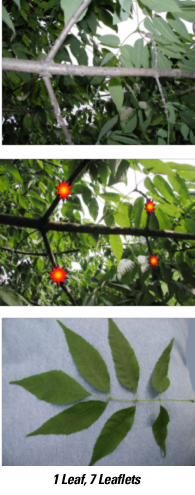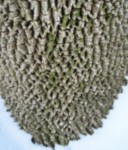 Ash Trees
Ash Trees
Ash trees (Fraxinus Species) are easily identified if several simple factors are understood. An Ash is unique from other trees because of the following distinctive characteristics: opposite branching, and compound leaf structure (examples shown in the following images). Remember, Mountain A sh (Sorbus) is not a true ash (Fraxinus), and is not affected by the Emerald Ash Borer.
Very few trees in our landscapes and forests have opposite branching. The predominant types are Maple, Ash, Dogwood and Horsechestnut. When looking for opposite branching in trees, please consider that buds or limbs may die; hence not every single branch will have an opposite mate.
Ash trees also have a compound leaf structure. A compound leaf is one that has more than one leaflet, while the entire leaf, as defined, has a bud at its stem base (petiole). Ash typically have approximately 5-9 leaflets per leaf.
 Ash trees bear color common names such as Green Ash, White Ash, Purple Ash and Blue Ash. Despite the color-based names, ash trees bloom with green leaves. Younger ash trees have relatively smooth bark, but as the tree ages the bark thickens and a diamond like pattern is noticeable. The tree develops tan key-shaped samaras (seeds), in which wind and seed-eating animals distribute away from the parent tree. Ash trees grow between 50 and 120 feet tall, and can live up to one hundred years.
Ash trees bear color common names such as Green Ash, White Ash, Purple Ash and Blue Ash. Despite the color-based names, ash trees bloom with green leaves. Younger ash trees have relatively smooth bark, but as the tree ages the bark thickens and a diamond like pattern is noticeable. The tree develops tan key-shaped samaras (seeds), in which wind and seed-eating animals distribute away from the parent tree. Ash trees grow between 50 and 120 feet tall, and can live up to one hundred years.
Common insect damage: Emerald Ash Borer
Common fungal disease – Anthracnose

